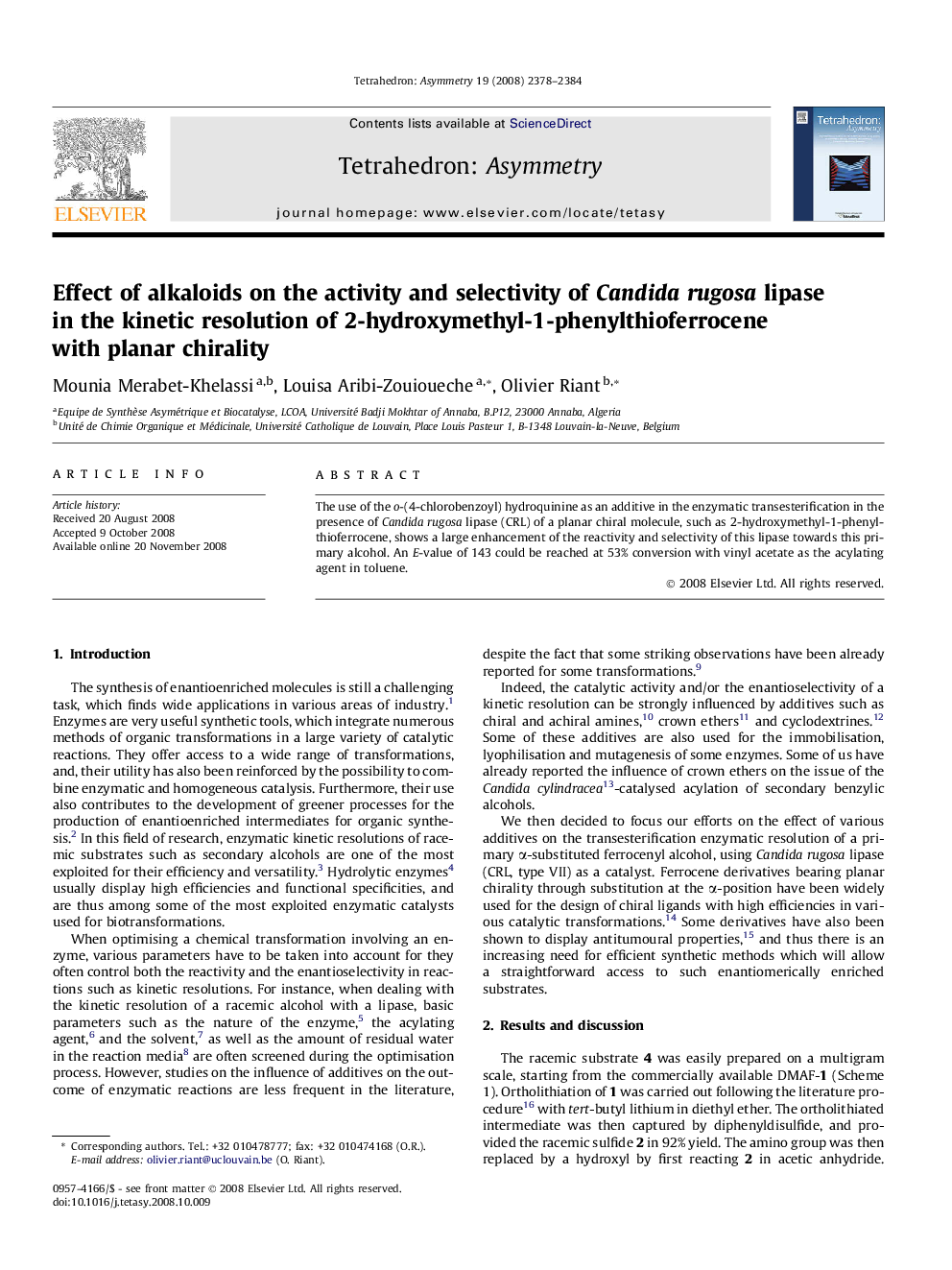| Article ID | Journal | Published Year | Pages | File Type |
|---|---|---|---|---|
| 1344924 | Tetrahedron: Asymmetry | 2008 | 7 Pages |
Abstract
The use of the o-(4-chlorobenzoyl) hydroquinine as an additive in the enzymatic transesterification in the presence of Candida rugosa lipase (CRL) of a planar chiral molecule, such as 2-hydroxymethyl-1-phenylthioferrocene, shows a large enhancement of the reactivity and selectivity of this lipase towards this primary alcohol. An E-value of 143 could be reached at 53% conversion with vinyl acetate as the acylating agent in toluene.
Graphical abstractFigure optionsDownload full-size imageDownload as PowerPoint slide
(SFc)-2-Hydroxymethyl-1-phenylthio-ferroceneC17H16FeOSEe = 99%[α]D = −56.2 (c 1, CH2Cl2)Absolute configuration: (SFc)Source of chirality: asymmetric synthesis
Related Topics
Physical Sciences and Engineering
Chemistry
Inorganic Chemistry
Authors
Mounia Merabet-Khelassi, Louisa Aribi-Zouioueche, Olivier Riant,
